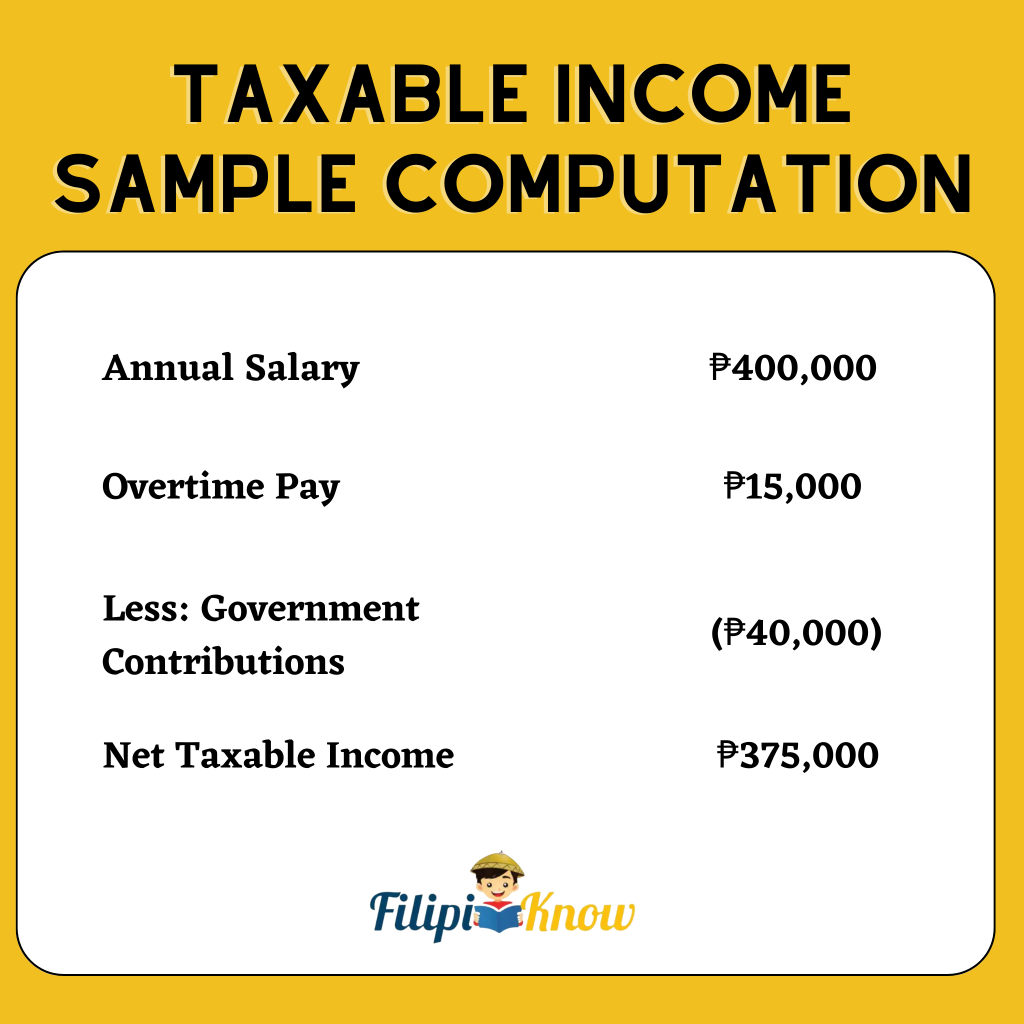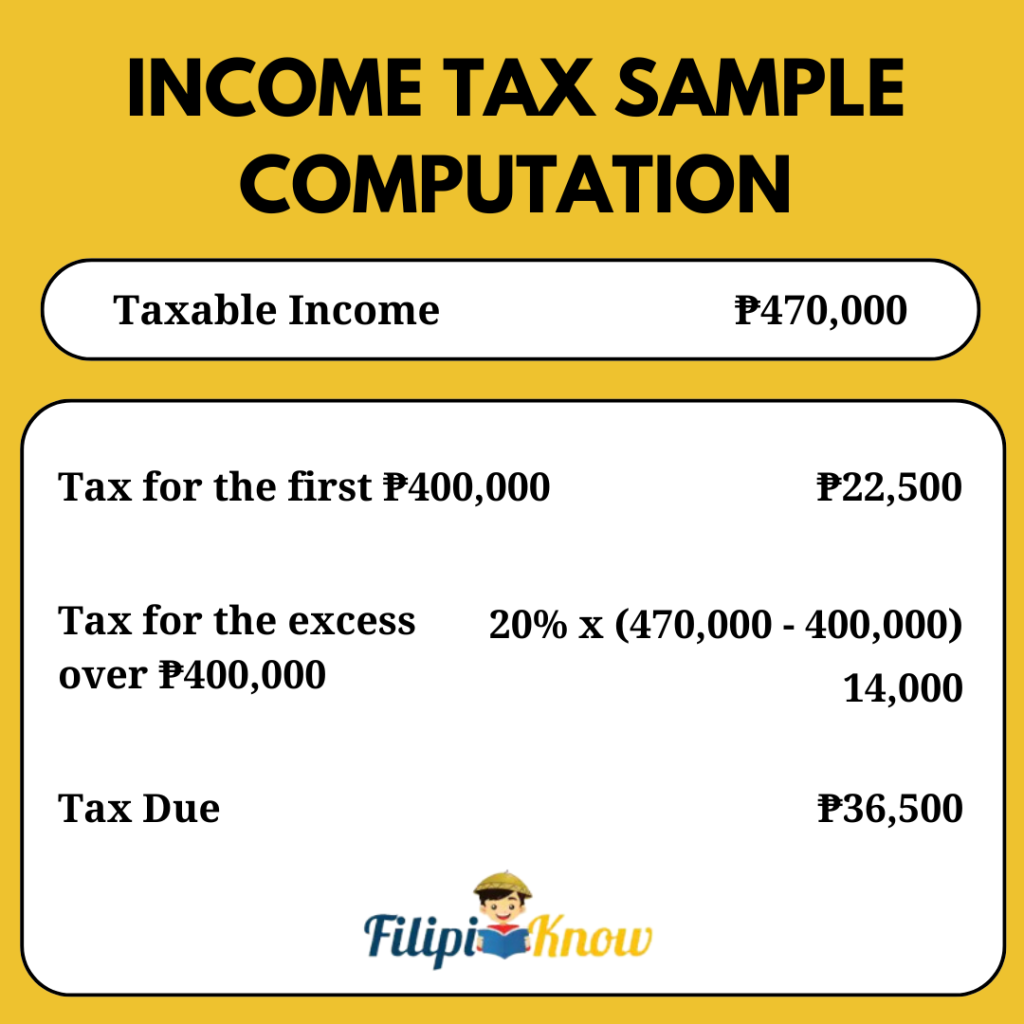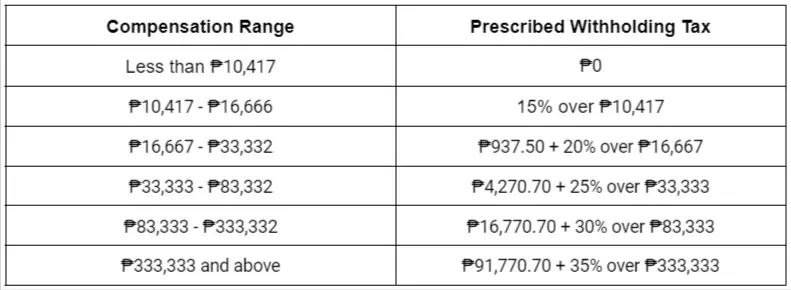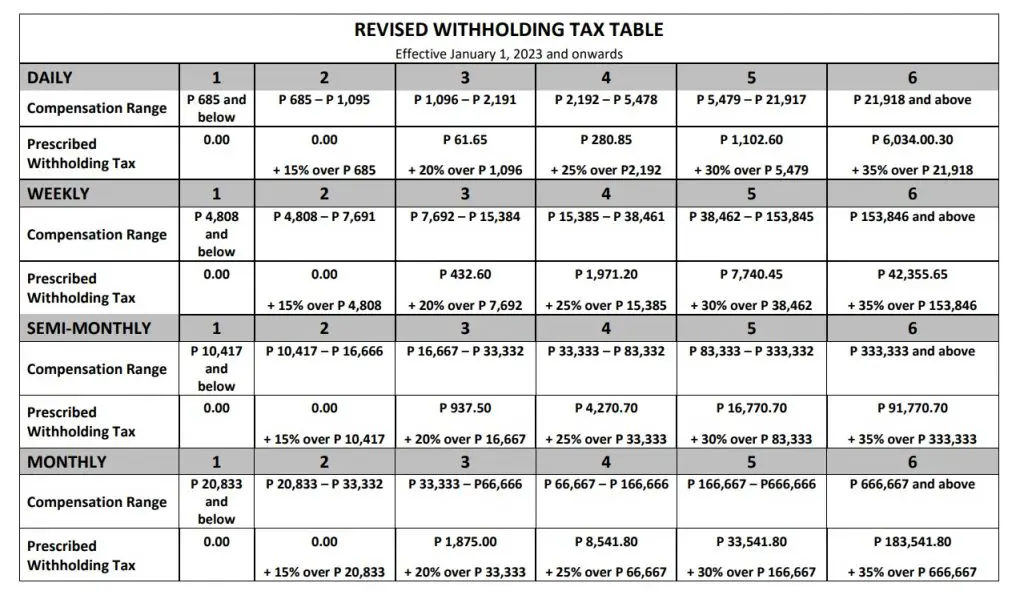How To Compute Income Tax Philippines: An Ultimate Guide

If you hate math, income tax computation can be your worst nightmare.
Unfortunately, you can’t escape from it, as determining your taxable income is essential to filing your income tax return.
Your duty as a Filipino citizen is to pay taxes, so knowing how to compute income tax is one of your responsibilities.
But it doesn’t have to be a nightmare. In this guide, we’ll discuss different ways to compute your income tax–from the manual method using the tax table to the most straightforward option of using online tax calculators.
Disclaimer: This article is for general information only and is not substitute for professional advice.
Related: How to File and Pay Taxes: An Ultimate Guide to Philippine Tax
Table of Contents
Basics of Income Tax Computation
Before proceeding to the different methods of computing your income tax, it’s essential to establish the difference between gross and taxable income.
Gross income is the total income you’ve earned before deductions are made. It doesn’t just refer to the salary you get as an employee (compensation income) but also to profits from your business or professional practice and any passive income you didn’t actively work for, like rents, royalties, prizes/prizes/winnings, etc.
On the other hand, taxable income is what’s left on your gross income if you less the allowable deductions. The taxable income, not the gross income, is used to determine the amount of annual income tax you must pay.
In short, here’s how to compute your taxable income:
Taxable Income = Gross Income + Additional Pay – Government Contributions
Example: Suppose you earn an annual salary of ₱400,000 with an additional overtime pay of ₱15,000 and a total of ₱40,000 worth of government contributions. Your taxable income will be:

For more information about gross and taxable income, please read the first part of this article.
But before jumping right into computing your income tax, check whether you’re a minimum wage earner. Salaries of minimum wage earners or those who earn less than ₱250,000 annually are exempted from income tax.
Moreover, these compensations are also exempted from income tax:
- Holiday pay
- Overtime pay
- Night Shift Differential Pay
- Hazard Pay
However, if you receive bonuses above ₱90,000, any excess amount will be subjected to income tax. For instance, if you receive ₱92,000 worth of bonuses, the excess of ₱2,000 (₱92,000 – ₱90,000 = ₱2,000) will be subject to income tax.
How To Compute Income Tax in the Philippines: 4 Ways
1. How to Compute Your Income Tax Using the New BIR Tax Rate Table
This manual computation of your income tax uses the following formula to determine your income tax due:
Taxable income (Gross income – Allowable deductions) x Tax rate – Tax withheld
To determine the applicable tax rate, please refer to the table below, effective January 1, 2023.
| Taxable Income | Tax Rate |
| ₱250,000 and below | 0% |
| Over ₱250,000 but not over ₱400,000 | 15% of the excess over ₱250,000 |
| Over ₱400,00 but not over ₱800,000 | ₱22,500 + 20% of the excess over ₱400,000 |
| Over ₱800,000 but not over ₱2,000,000 | ₱102,500 + 25% of the excess over ₱800,000 |
| Over ₱2,000,000 but not over ₱8,000,000 | ₱402,500 + 30% of the excess over ₱2,000,000 |
| Over ₱8,000,000 | ₱2,202,500 + 35% of the excess over ₱8,000,000 |
Let’s give an example. Suppose your annual salary is ₱500,000 with an overtime pay of ₱10,000 and total government contributions for the entire year amounting to ₱40,000. Before you compute your income tax, it is necessary to determine your taxable income first to know which category of the table above your income falls into.
To compute your taxable income:
Taxable Income = Gross Income + Additional Pay – Government Contributions
Taxable Income = 500,000 + 10,000 – 40,000
Taxable Income = ₱470,000
From our computation above, we have identified that the taxable income is ₱470,000. Looking at the tax table, your taxable income falls into the third row with an applicable tax rate of ₱22,500 + 20% of the excess over ₱400,000. This means that your income tax is equivalent to a base amount of 22,500 plus the 20% of the difference between your taxable income and 400,000.
Income Tax = ₱22,500 + 20% of (470,000 – 400,000)
Income Tax = ₱22,500 + 20% of (70,000)
Income Tax = ₱22,500 + 14,000
Income Tax = ₱36,500
Thus, a person with a taxable income of ₱470,000 has to pay an income tax of ₱36,500.

Read more about computing your income tax rate with the help of the latest BIR tax rate tables.
2. How To Compute Your Income Tax Based on an 8% Preferential Tax Rate
The 8% tax rate is a simpler way to compute, file, and pay income tax. It’s based on gross sales or receipts and other non-operating income (e.g., profits from investments and sales of properties and assets) over Php 250,000.
Deducting various expenses when computing income tax with this flat-rate option is unnecessary. Also, the 8% tax rate already covers both graduated income tax and percentage tax, so taxpayers don’t have to file and pay them separately.
However, not all taxpayers can use this optional tax rate. It applies only to the business and professional income of self-employed and mixed-income taxpayers whose gross sales or receipts and other non-operating income for the taxable year don’t exceed Php 3 million.
The 8% tax rate doesn’t apply to a small business’s income if registered as a corporation.
Here’s the formula for computing your income tax based on the 8% tax rate, depending on your taxpayer type:
For self-employed individuals earning income solely from business and/or profession:
Income tax due = 8% x [Gross sales or receipts + Non-operating income – Php 250,000]For mixed income-earners:
Income tax due = [8% x Gross sales or receipts + Non-operating income] + Tax due on compensation income (based on graduated tax rates)
The Php 250,000 deduction excludes mixed-income earners’ business/professional income. It’s already deducted from the compensation income when computing income tax based on graduated rates. This amount can be deducted only once.
Sample income tax computation (for the taxable year 2020)
Scenario 1: Full-time small business owner with total gross sales of Php 480,000 and without any non-operating income for the previous taxable year who availed of the 8% tax rate
- Get the taxable income. Deduct the non-taxable Php 250,000 from the gross sales: Php 480,000 – Php 250,000 = Php 230,000.
- To compute the income tax due, multiply the difference by 8%: Php 230,000 x 0.08 = Php 18,400.
Scenario 2: Call center employee with a gross monthly salary of Php 20,000, receiving 13th-month pay of the same amount, earning Php 15,000 monthly as a freelance photographer, and availed of the 8% tax rate on business income
1. Computation of income tax due on compensation income (Using the graduated tax rates):
a. Get the annual salary: Php 20,000 x 12 months = Php 240,000.
b. Compute the total annual contributions (employee’s share only).
- SSS – Php 800 x 12 months = Php 9,600
- PhilHealth – Php 300 x 12 months = Php 3,600
- Pag-IBIG – Php 100 x 12 months = Php 1,200
- Total annual contributions: Php 14,400
c. Get the taxable income. Deduct the total annual contributions from the annual salary: Php 240,000 – Php 14,400 = Php 225,600.
d. Refer to the BIR’s graduated tax table to find the applicable tax rate. The taxable income of Php 225,600 falls under the first bracket, which means the tax rate is 0%. Since the taxable income is below the Php 250,000 tax exemption, the employee should not pay tax on compensation income.
2. Computation of income tax due on business income (Using the 8% tax rate):
- Get the annual gross income: Php 15,000 x 12 months = Php 180,000
- Multiply the gross income by 8% to compute the income tax due: Php 180,000 x 0.08 = Php 14,400
3. Computation of total income tax due:
Add up the income taxes due on compensation income and business income. Since the mixed-income earner is exempted from paying income tax on compensation, he must only file and pay the Php 14,400 tax due on business income.
Conversely, suppose the mixed-income earner has opted to use the graduated income tax rates for computing tax based on his business income. In that case, he must combine his taxable compensation and business income. Then calculate the annual income tax due based on the graduated tax table.
3. How To Compute Tax on Passive Income
The BIR imposes different tax rates on certain types of passive income. The only exceptions are prizes worth Php 10,000 and below (Tax computation is based on the graduated tax rates) and tax-exempt incomes such as PCSO and lotto winnings worth Php 10,000 or less.
Unlike compensation and business income, computing the tax due on passive income is more straightforward. Multiply your earnings by the applicable tax rate to determine your tax amount.
For local and foreign taxpayers living in the Philippines, here’s the BIR tax table showing the tax rates on passive income.
| Passive Income | Tax Rate |
| 1. Interest from currency deposits, trust funds, and deposit substitutes | 20% |
| 2. Royalties (on books as well as literally & musical compositions) | 10% |
| – In general | 20% |
| 3. Prizes (₱10,000 or less) | Graduated Income Tax Rates |
| – Over ₱10,000 | 20% |
| 4. Winnings (except from PCSO and Lotto amounting to ₱10,000 or less) | 20% |
| – From PCSO and Lotto amounting to ₱10,000 or less | Exempt |
| 5. Interest Income from a Depository Bank under the Expanded Foreign Currency Deposit System | Exempt |
| 6. Cash and/or Property Dividends received by an individual from a domestic corporation/ joint stock company/ insurance or mutual funds companies/ Regional Operating Headquarter of multinational companies | 15% |
| 7. Share of an individual in the distributable net income after tax of a partnership (except GPPs)/ association, a joint account, a joint venture, or consortium taxable as a corporation of which he is a member or co-venture | 10% |
| 8. Capital gains from the sale, exchange, or other disposition of real property located in the Philippines, classified as a capital asset | 6% |
| 9. Net capital gains from the sale of shares of stock not traded in the stock exchange | 15% |
| 10. Interest Income from long-term deposits or investments in the form of savings, common or individual trust funds, deposit substitutes, investment management accounts, and other investments evidenced by certificates in such form prescribed by the Bangko Sentral ng Pilipinas (BSP). Upon pre-termination before the fifth year, there should be imposed on the entire income from the proceeds of the long-term deposit based on the remaining maturity thereof: Holding period | Exempt |
| – Four (4) years to less than five (5) years | 5% |
| – Three (3) years to less than four (4) years | 12% |
| – Less than three (3) years | 20% |
Let’s say you won Php 1 million in the lotto. The tax rate of 20% on prizes over Php 10,000 is automatically deducted before you receive it.
Before you claim your prize, you can compute how much tax is deducted. Multiply Php 1 million by 20% (Php 1 million x 0.20). Expect to be taxed Php 200,000 and receive the remaining Php 800,000.
Update: Applicable tax rates for passive income might be changed soon as House Bill No. 43991, which includes reforms in passive income taxation, is already approved in the final reading of the House of Representatives. Necessary revisions include the following:
- Reduction of interest and royalties tax rates from 20% to 15% from 2023 to 2027
- Unified tax rate of 15% on interest income, royalties, dividends, and capital gains on the sales of stocks that are not traded in a stock exchange
4. How to Compute Your Income Tax Using an Online Tax Calculator
No time to compute your income tax manually? Try online tax calculators instead.
As of this writing, three online tax calculators from three different government agencies are active:
- BIR Withholding Tax Calculator
- DOF Tax Calculator
- NTRC Income Tax Calculator
However, note that the online tools mentioned above can only estimate how much income tax you’re required to pay. Go to this article to learn how to use each of these online tax calculators.
Frequently Asked Questions
1. Should I file income tax under the 8% special rate or the graduated rates?
To promote better tax compliance among self-employed individuals, the government offered a new option under the TRAIN law: the 8% flat rate for income tax.
This 8% rate option for self-employed taxpayers simplifies income tax computation and filing requirements. If you avail of this tax rate, you don’t deduct business expenses from your gross income to determine your taxable income. Instead, you multiply your annual gross sales or receipts by 8%.
Also, you’re exempted from paying the 3% quarterly percentage tax under the 8% tax rate.
While all these benefits are good reasons to choose the 8% tax rate over the graduated rates of 0% to 35%, it’s not ideal for everyone. The flat tax rate works best for freelancers, professionals, and other service-oriented jobs/businesses with minimal business expenses.
Businesses and individuals with significant business expenses can minimize their tax dues with the graduated tax rates, which allow certain deductions from the gross income.
To know which income tax rate option is optimal, do the math and compare the tax payable under the 8% tax rate vs. graduated rates. Whichever yields a lower tax due is the better option.
2. How do I compute my income tax due if my employer pays me semi-monthly?
As per RR 11-2018 Annex E, the applicable 2023 tax rates for those compensated semi-monthly are shown below.

Suppose that your taxable semi-monthly income is ₱20,000. This amount falls into the third row of the table above with a prescribed withholding tax of ₱937.50 + 20% over ₱16,667.
This means that you have to pay ₱937.50 plus 20% of the difference between 20,000 and 16,667
Tax Due = 937.50 + 20% of (20,000 – 16,667)
Tax Due = 937.50 + 20% * 3,333
Tax Due = 937.50 + 666.60
Tax Due = 1,604.10
Thus, the tax due is ₱1,604.10
If, instead, you are compensated on a daily, weekly, or monthly basis, you can refer to the BIR revised withholding tax table to compute your tax due. The process is just the same as the computation for those who are compensated on a semi-annual basis.
 Reference: Annex E RR 11-2018
Reference: Annex E RR 11-2018
References
- Pinlac, B. (2022, November 15). Bill reforming taxes on financial services, passive income gets final house nod. Retrieved April 14, 2023, from https://newsinfo.inquirer.net/1693366/bill-on-tax-reforms-for-financial-services-passive-income-earn-house-nod-in-final-reading
Written by Miguel Antonio Dar II, CPA
in Accounting and Taxation, BIR, Government Services, Juander How
Miguel Antonio Dar II, CPA
Miguel Dar is a CPA and an experienced tax adviser specializing in tax audits. He gives tax advice to different start-ups and clarifies tax concerns of individual taxpayers. This includes helping clients register their businesses, training in tax and bookkeeping for start-up businesses, settling open cases, tax planning for future tax compliance, and responding to tax-related inquiries.
Copyright Notice
All materials contained on this site are protected by the Republic of the Philippines copyright law and may not be reproduced, distributed, transmitted, displayed, published, or broadcast without the prior written permission of filipiknow.net or in the case of third party materials, the owner of that content. You may not alter or remove any trademark, copyright, or other notice from copies of the content. Be warned that we have already reported and helped terminate several websites and YouTube channels for blatantly stealing our content. If you wish to use filipiknow.net content for commercial purposes, such as for content syndication, etc., please contact us at legal(at)filipiknow(dot)net
